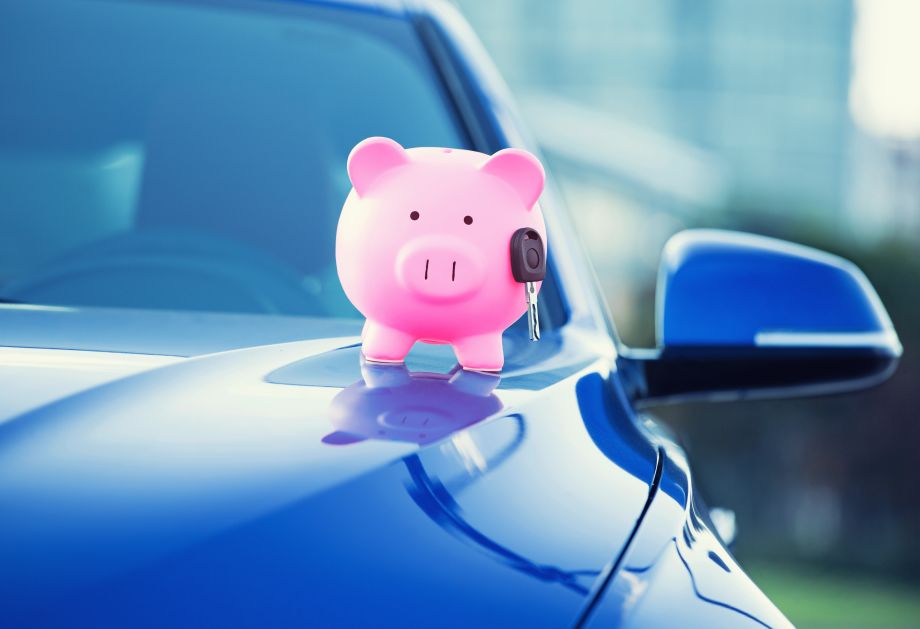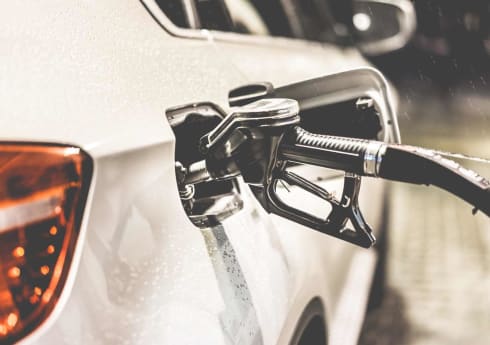Which driving technique saves fuel? Business guide 2022
Businesses like yours want to save money on fuel. That’s normal! And one of the best ways to keep fuel costs down is to train your fleet with handy driving tips.
And which driving technique saves fuel? Well, there are a fair few of them! Let’s dive in and explore your options.

The driving techniques that’ll save your fleet fuel
Now, this is all about your fleet management skills.
The better trained your drivers, and the more knowhow they have, the better equipped they are to save fuel.
And that’s really important when you’ve got a full fleet out and about across the UK! So, which driving technique saves fuel? It’s time to find out the best tips and tricks.
Don’t leave the engine ticking over
We all know this, but it’s a bad habit that builds up. It’s like leaving the tap running when you’re brushing your teeth.
If your driver has parked up to take a call, or they’re at a service station eating a pasty, some will sit there with the engine ticking over. It’s not a good look. And it’s not good for business.
If they’re parked up and waiting, get the engine turned off. Drill that routine into your drivers! Make sure it’s an automatic habit. Because, we mean, look at the stats!
- 10 seconds of ticking over uses up more fuel than stopping and restarting
- An average HGV uses 5 litres of diesel after 30 minutes of idling
- Each panel van left ticking over for 30 minutes every day burns through a tank of diesel in one month
Want that to stop? You can easily see which drivers follow your instructions, and which ones don’t, with vehicle tracking systems.
We’ll cover these in further detail at the bottom of this guide, but just be aware you don’t have to be clueless on what your drivers are up to! This fancy tech can even let you know if your drivers are sitting with an engine ticking over.
Worth keeping in mind! All you need to do is compare the market for a great deal and you can be in the know ASAP.
Use a higher gear
This one is really important, so maybe take a note of it! Screen grab a picture and forward it to your fleet.
It’s this—drive in a higher gear. It saves fuel.
If you’re driving around in town in second/third gear, don’t do that. Instead, use the gear that puts your revs under 1,3000-2,500 per minute.
You’ll need to look closely into that, because it’s different for diesel and petrol vehicles.
But it’s crucial to know! It saves a ton of fuel over the course of a year. Training your drivers about it is the first step to making sure they don’t overdo it.
Get the air conditioning off
Okay, so, which driving technique can help you save fuel? Well, you probably wouldn’t have thought of this one!
As tempting as it may be to ramp up the AC on hot days, it’s not good for the fuel in your tank.
It takes a lot of fuel to run an AC when driving.
Stats show you can save at least 4% of fuel by avoiding AC usage when driving on any given journey. And that really builds up over a year.
So, what’s the solution? Crank open a window! Or use the air blowers you get with any vehicle. Problem solved.
iCompario tip: Use vehicle tracking to up your game
Vehicle tracking offers start from £2.50 per vehicle each month. You can know any given vehicle’s location, driver and activity at any time. And in real-time you can get alerts on bad driving, accidents and fuel usage. With all the data you get, it’s the perfect way to reduce your fuel consumption and get your fleet driving better.
Keep your fleet well maintained
If your business keeps track of vehicle upkeep, you’ll save money on fuel. In the long-term, the budget spent on maintenance pays off.
There are a few simple steps you can take to help here:
- Check your tyre pressures: If they’re under or overinflated, that’ll dent your vehicle’s performance and waste fuel
- Service your vehicle: And do it regularly! They’ll spot any issues with your car you might miss
- Keep an eye out for fluids: Look under your vehicles. Is anything leaking? If yes, that’s stopping peak performance and you should fix the issue
Those are some basic steps, but cars and vans are complex things. There’s plenty more to think about with them! And plenty more that could go wrong.
We’ve got a full guide to fleet maintenance costs to help you out here. It’s got some really useful tips in it.
iCompario tip: A well-maintained fleet reduces vehicle insurance costs
Business vehicle insurance is essential these days. But did you know if you put the time into looking after your fleet, that’ll reduce your vehicle insurance? That’s why it’s so important to put the time in to keep your vehicles in peak condition.
Don’t stamp on your pedals
While it’s tempting to light up your tyres like it’s the start of the British GP, it’s really not a good way to go about driving.
Harsh acceleration, and braking, uses way more fuel than you need to.
What your drivers need to do instead is focus on driving sensibly. That means:
- Always stay focussed and give yourself loads of time to brake
- Pull away at a normal speed
These two tips will save you a bunch of fuel and make sure you’re driving safely, too.
iCompario tip: Use a fuel card to track your fleet
Businesses with a fuel card can easily reclaim VAT invoices, setup drivers with easy expenses for fuel and get price discounts. All from one fuel card! You can save on admin work and easily keep track of every penny spent on fuel from a single account. Compare the market to get a great deal on the perfect fuel card.
There’s no need to floor it
Okay, which driving technique can help you save fuel when your drivers are flooring it? Well, always stick to the speed limit!
For starters, remember it’s illegal to speed in designated speed zones. Some drivers don’t pay attention to the laws and think it’s fine to do 40 in a 30 zone, for example. That’s no bother, right? Everyone does it!
Well, no, it can land you with speeding tickets. It’ll also waste a load of fuel.
If you’re on a motorway or A road, the speed limit is 60-70mph. And it’s that way for a reason, because it’s the best for fuel consumption.
So, stick to those limits! And make sure your fleet knows that no one wins by speeding, even if they think they’re being clever about it.
Keep your speeds the same
As much as you can, get your fleet to be consistent with speeds.
You can use cruise control to help you out there, because it’ll keep your drivers as close as possible to the optimum speeds.
Another option here is to stick to straight roads. That’s why travelling on the motorway is a good idea, over twisting and turning through tight country roads. You do less braking that way, which keeps your fuel consumption A-OK.
But remember! Always switch off cruise control if you’re going up a hill. Otherwise, your engine has to go into overdrive.
Anticipate what’s ahead
Clever drivers will reward your business with lower fuel use.
Keeping up your vehicle’s momentum is all-important. This isn’t always possible because of traffic, but you should train your drivers to drive smartly. You do that by:
- Being as smooth as possible
- Using the steering wheel gently (no need to wrench it from left to right like they’re a rally driver)
- And don’t stamp on the pedals
- When slowing, stay in gear when the fuel cut-off switch kicks in (if you’ve got a fuel injection engine). That saves a ton of fuel
And, of course, get your drivers to anticipate the roads around them. See traffic lights up ahead changing? Ease off and slowdown naturally.
Approaching a roundabout? Be alert and choose the best moment to go.
It all adds up over the course any working day, week, month and year. And it can save you a load of fuel.
Heat up your engine
A cold engine isn’t a happy engine. That means if you’ve only got a short journey, then you’re going to waste fuel.
Try to build as many journeys into one trip as possible.
Because over longer trips, your engine will warm up and you’ll be at peak fuel consumption when you’re doing it. Makes sound business sense, right?
Don’t overload your vehicle
Another temptation for drivers is to pile as much into their vehicle as possible.
This isn’t a good idea. Only put as much into your cargo area as you need. If you’re weighted down by loads of bulk you don’t really need in there, then you’re wasting fuel.
Solution? Always make sure your ride is as light as it needs to be.
Time to become a hypermiling master!
So, which driving technique saves fuel the best? Hypermiling. It’s an artform! Think about it as driving economically and not overdoing your fleet’s manufacturer recommendations.
Basically, it means using all of the above techniques to make sure your drivers are maximising their fuel saving potential.
All of that lot combined together will lead to a huge amount of saved fuel. And you can put that saved money back into your business for much better things.
Well worth it! It’ll supercharge your business as a fuel saver, make you a safe fleet on the road and let you focus on doing what you do best.Use vehicle tracking to improve your fuel saving game
Vehicle tracking offers start from £2.50 per vehicle each month. You can know any given vehicle’s location, driver and activity at any time.
Add into that handy features like:
- Instant alerts for bad driving, accidents and unauthorised vehicle use
- Real-time data that lets you reduce fuel use and work out how to lower motor repair costs
- Easy self-install options so you’re not getting interrupted all the time
It’s a no-brainer for any modern business.
Which driving technique saves fuel? Well, a combination of your driver habits. Which can be improved with telematics systems that make your working life miles easier. And much cheaper.



